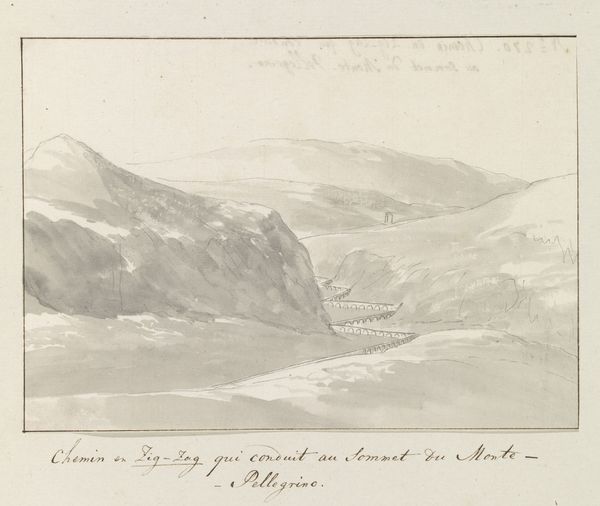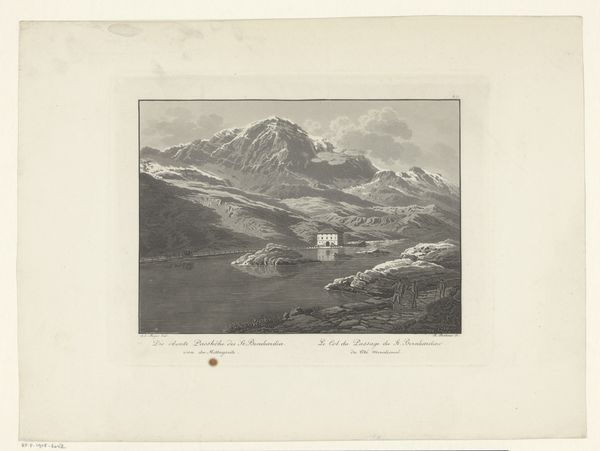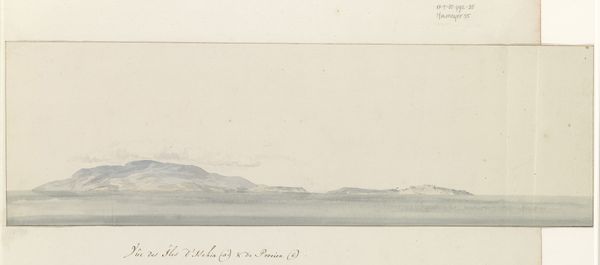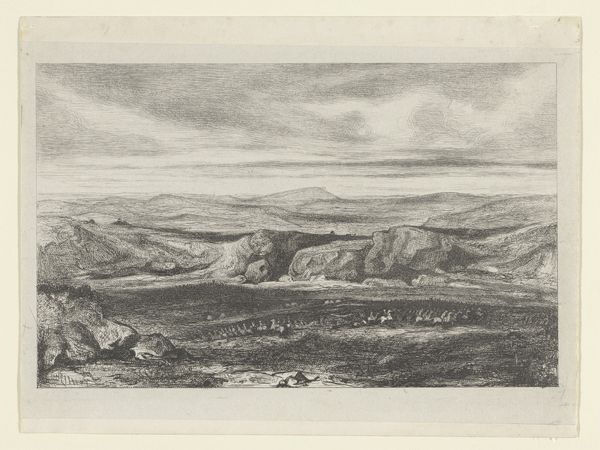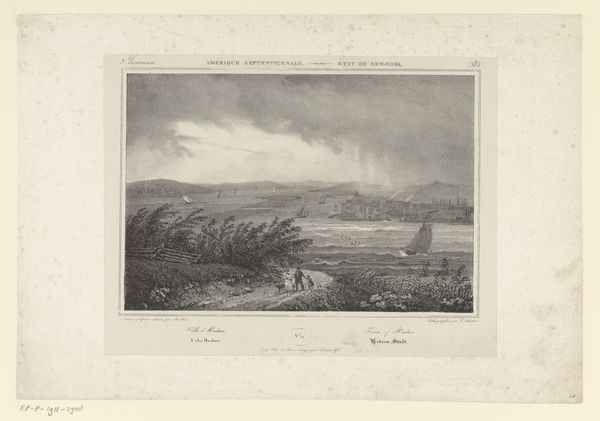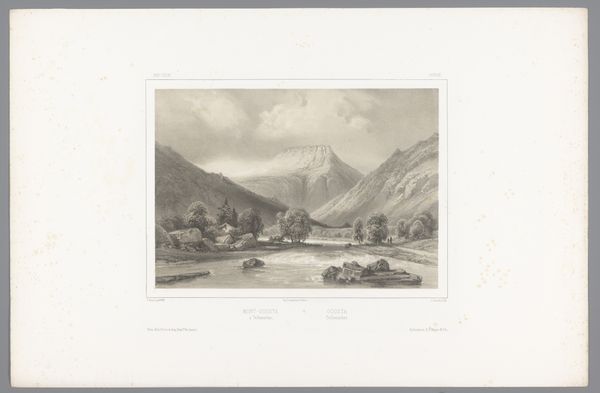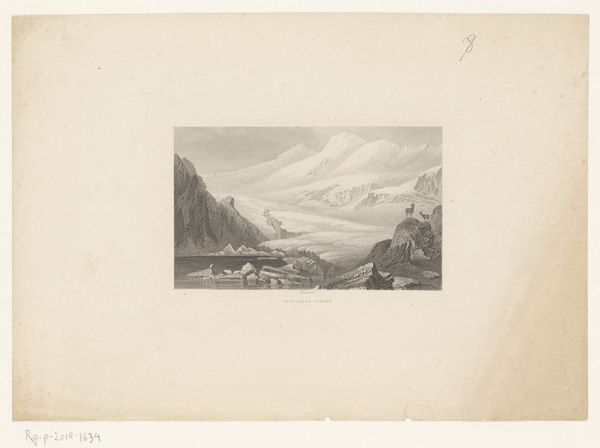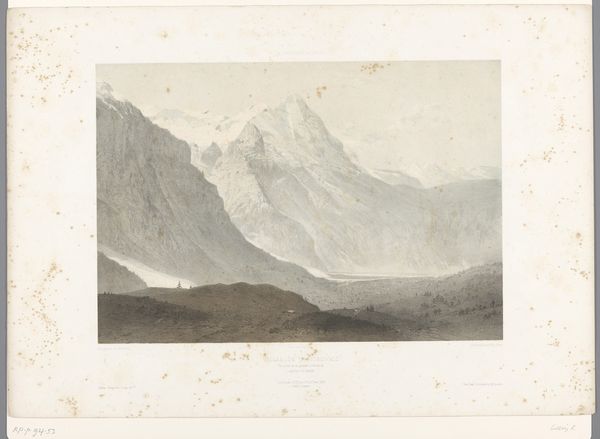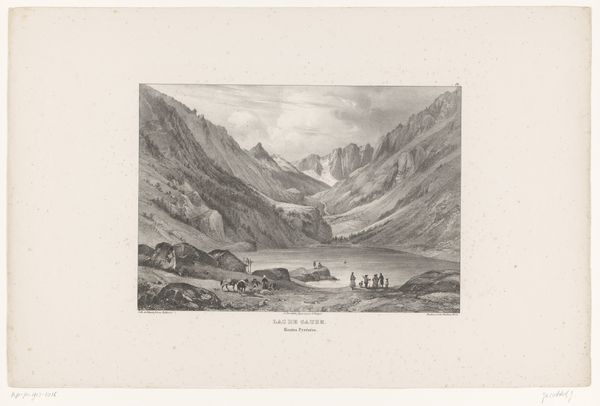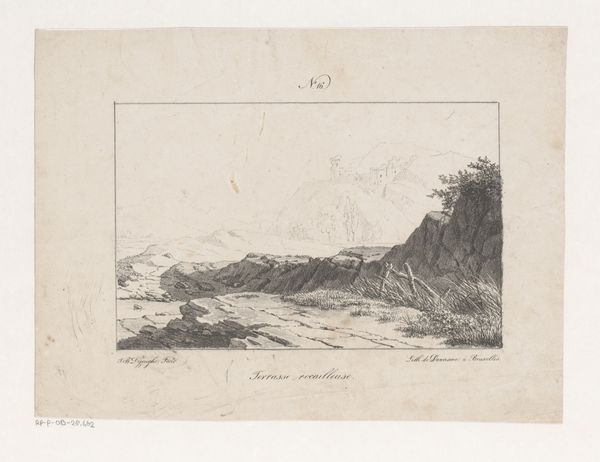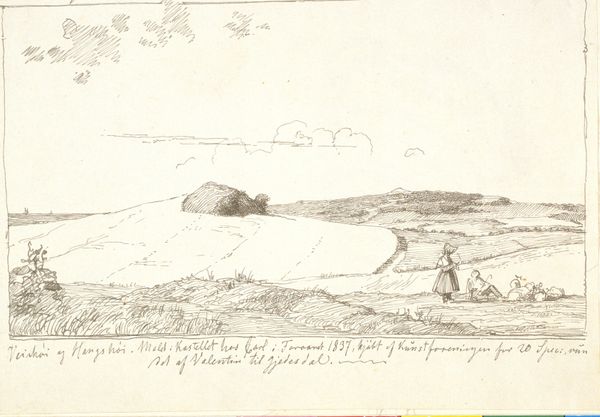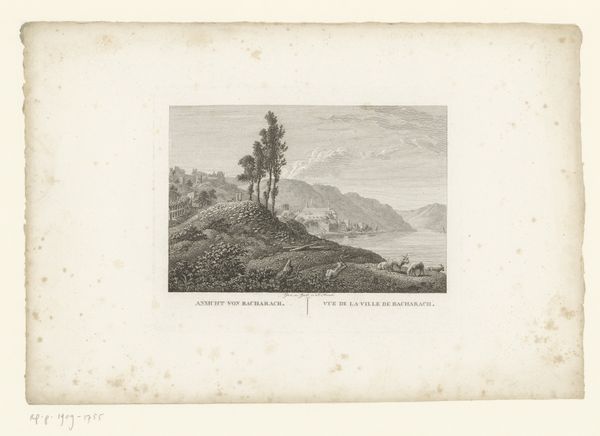
drawing, print, etching, paper
#
drawing
# print
#
etching
#
pencil sketch
#
landscape
#
paper
#
romanticism
Dimensions: height 159 mm, width 228 mm
Copyright: Rijks Museum: Open Domain
Editor: So, this is "Gezicht op de vulkaan Popocatépetl" – or, "View of the Popocatépetl Volcano"–made sometime between 1809 and 1864 by Abraham Vinkeles. It’s an etching, printed on paper. There's something quite delicate about it, despite the subject being a volcano! I'm struck by the contrast between the massive volcano and the tiny figures in the foreground. How do you interpret this work? Curator: What interests me is the materiality of this image and the conditions of its production. Look closely at the etching. It’s not just a neutral representation of a volcano; it's an object made through a specific labor process. The artist, Vinkeles, likely wasn't experiencing this landscape firsthand but rather working from earlier sketches or descriptions perhaps. Think about the consumption of these images. This print makes a far away territory accessible to the masses. How might that affect a contemporary view of the colonial process? Editor: That's a fascinating perspective. I was focusing on the aesthetic representation, but the labor and accessibility aspects really open it up. The idea that people are consuming images of exotic landscapes from afar...it brings a completely different weight to the image. Curator: Exactly. And consider the social context surrounding Romanticism and its obsession with landscape. Why were Europeans so drawn to depicting scenes from other lands during this time? Was it simply for the art of it? Or did it involve a colonial gaze that transformed resources into consumer items? This etching participates in and reflects those dynamics. Editor: I never thought about it that way. The act of making and reproducing images… It’s inherently tied to a whole network of economic and cultural forces. Thank you! It makes me look at art, and everything really, so differently! Curator: Indeed. By analyzing the material production and circulation of art objects, we gain a richer understanding of the social forces at play. It’s not just about the artist's intention but about the systems in which that intention is embedded.
Comments
No comments
Be the first to comment and join the conversation on the ultimate creative platform.
